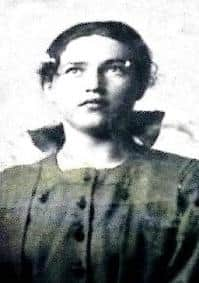Bereaved Royal Irish Constabulary families to meet ‘in forgiveness’ after Black and Tans row


The plans come after the Irish government deferred commemorations for the Royal Irish Constabulary (RIC) due to protests over its conduct and that of its auxiliary forces in the Irish War of Independence.
But the row prompted Galway law professor Gerard Quinn to go public with his own recent experience.
Advertisement
Hide AdAdvertisement
Hide AdIn 1920 his grandmother, Eileen, 24, was pregnant when she was shot dead by a passing RIC patrol while sitting on her front wall. The shooting had a huge impact on his family, with his then three-year-old father witnessing it.


“When you are in conflict everything becomes black and white,” he said. “You have to choose sides. And you have to label the other side.
“But when you have the advantage of distance, time-wise, you realise that is not actually how life is. There is good and suffering on all sides.
“My cousins have reached the same conclusion and we are all morphing towards some sort of theory of forgiveness, but not forgetting.”
Advertisement
Hide AdAdvertisement
Hide AdJust two days before his grandmother’s death, local RIC Constable Timothy Horan was also killed, in an ambush.
Mr Horan’s grandson, who just discovered his forbear was in the RIC, contacted Gerard after hearing him speak on RTE radio.
“He is only really now coming to terms with the fact that his grandfather was in the RIC, was killed and all the family history since then,” said Prof Quinn.
Meeting over a “very pleasant” coffee recently, they discovered they have the common experience of fathers who descended into dark silences over the two deaths.
Advertisement
Hide AdAdvertisement
Hide Ad“And we decided at some point that we would all come together, all the different families. Eileen left three young children, and this policeman left three young children and a widow. There is a rough symmetry of suffering on all sides.”
He believes forgiveness is very important.
“We must not allow ourselves to be captured by ‘isms’ or politics and just reach out and touch the other human experience and connect with that. And then start building from there.”
Asked if the commemorations should go ahead, he replies: “Yes. In some shape or other – but yes.”
During the political row, Sinn Fein President Mary Lou McDonald tweeted: “Nowhere else would those who brutally suppressed national freedom be afforded a state commemoration.”
Advertisement
Hide AdAdvertisement
Hide AdShe accused Irish Premier Leo Varadkar’s Fine Gael party of commemorating a controversial group of British soldiers known as the Black and Tans alongside the RIC and Dublin Metropolitan Police, but the Irish justice minister Charlie Flannagan rejected the claims.
“It is not a celebration,” Mr Flanagan insisted.
“It is an acknowledgement of the historical importance of both the DMP and the RIC, and is in no sense a commemoration of the Black and Tans or the Auxiliaries,” he added.
During the 1919-21 Irish War of Independence, the RIC was under increasing attack from the IRA and the British government reinforced its dwindling ranks with thousands of ex-soldiers, mostly from England.
The new RIC special reserve recruits were nicknamed the Black and Tans because of their distinctive uniforms.
A few months later, the British government established a second additional force, the Auxiliaries, this time recruiting from demobilised army officers.